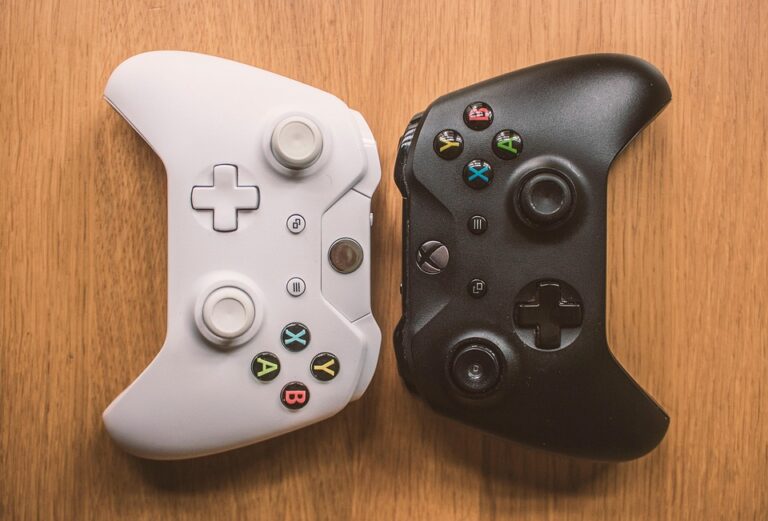From Harassment to Hype: The Impact of Online Toxicity on Game Development
The video game industry has seen remarkable growth in recent years, but alongside this rise, several gaming controversies have emerged, particularly involving online toxicity. The dark side of this vibrant community often manifests as harassment directed at developers, gamers, and even the games themselves. This article explores how online toxicity affects game development, from its initial repercussions to the eventual hype that can arise from overcoming such challenges.
Understanding Online Toxicity in Gaming
Online toxicity encompasses a broad range of negative behaviors in digital environments, including harassment, bullying, and discrimination. According to a report by Anti-Defamation League (ADL), 54% of gamers reported experiencing some form of harassment online. This staggering statistic reflects a culture where aggressive behavior is not only normalized but also accepted as part of the gaming experience.
Case Study: The Fallout from "Cyberpunk 2077"
One significant case of online toxicity occurred with the release of "Cyberpunk 2077." Following its launch, the game’s developers at CD Projekt Red faced severe backlash due to numerous bugs and performance issues. While criticism can be constructive, the vitriol that followed crossed the line into personal attacks on developers. Social media became a battleground where toxic comments overshadowed the legitimate concerns of players, demonstrating how quickly gaming controversies can escalate.
The Consequences of Harassment
The impact of online toxicity is multi-faceted, affecting not just the developers but the industry as a whole. Here are some serious implications:
-
Mental Health Decline: Developers often face severe mental and emotional distress due to targeted harassment. A survey by IndieCade revealed that 60% of game developers have experienced mental health challenges related to online toxicity.
-
Project Delays: Haunted by negative backlash, some studios may decide to delay game launches or even cancel projects altogether. The fear of further public criticism can stifle artistic creativity and innovation.
- Skepticism Towards Community Feedback: Constant negative feedback can lead developers to disengage from their communities. When faced with toxicity, they may ignore valuable player feedback altogether, which can stunt the growth of future projects.
Turning Harassment into Hype
Despite the overwhelming negativity surrounding online toxicity, some gaming controversies have led to surprising outcomes. When developers confront harassment directly and adapt positively, the narrative can shift dramatically.
The Power of Transparency
Transparency is key. When developers acknowledge problems and communicate openly with their audience, positive results often follow. For instance, after the backlash against "Cyberpunk 2077," CD Projekt Red committed to ongoing updates and improvements. By addressing concerns head-on, they turned criticism into a renewed bond with their community and gave rise to excitement for future content.
The Role of Community Engagement
Communities can also play a protective role. Platforms like Twitch and Discord have fostered environments where developers interact directly with players. In such spaces, toxicity can be countered by supportive fans who advocate for positive dialogue. This sort of engagement not only helps in building loyalty but also provides developers with valuable insights, often leading to the successful launch of titles.
Industry-wide Responses to Online Toxicity
In response to the growing incidence of online toxicity, the gaming industry is beginning to implement changes:
-
Player Behavior Reports: Many games now feature reporting systems that allow users to flag toxic behavior. These systems help maintain a healthier community atmosphere.
-
Collaborations with Mental Health Organizations: Companies are increasingly recognizing the importance of mental health support for developers and players alike, often collaborating with organizations such as Take This or the Samaritans.
- Code of Conduct Enhancements: Several major gaming platforms have begun adopting stricter codes of conduct, ensuring that toxic behavior has no place in their communities.
Final Thoughts
The dichotomy between harassment and hype in the gaming industry highlights the complex relationship developers have with their communities. To navigate this landscape, studios must remain vigilant and proactive against online toxicity.
By focusing on transparency, community engagement, and utilizing resources to foster a supportive culture, developers can transform gaming controversies into opportunities for positive change. The challenge remains, but with a collective effort from the industry and its fans, the future of gaming can be both inclusive and inspiring.
Further Reading
- The Rise of Gaming Controversies: What’s Next?
- How Developers are Conquering Online Toxicity
- Understanding Online Harassment: A Gamer’s Perspective
External Links
Suggested Images
- Image of a game developer at work with a focus on community interaction – Alt text: "Gaming controversies and online toxicity interaction."
- An infographic reflecting statistics about online harassment in gaming – Alt text: "Statistics on gaming controversies and online toxicity."
Through thoughtful measures and community engagement, the gaming industry can work towards mitigating the negative impacts of online toxicity while celebrating the successes that arise from overcoming challenges.


